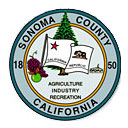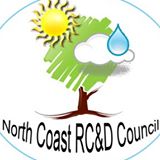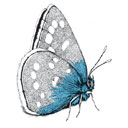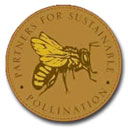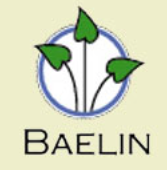Pollinators
Insectaries for Pollinators and Farm Biodiversity:
An Innovative Pilot Project
The project was a collaborative effort led by the Gold Ridge Resource Conservation District, including participation from Farm Stewards, Partners for Sustainable Pollination, the Xerces Society, the North Coast Resource Conservation and Development Council, and the many landowners and community members who helped to plant nearly 2 acres of pollinator habitat using over 6,100 plants.
Plantings were specifically designed to provide nesting habitat and year-round pollen and nectar sources for both native bee species and honeybees, while also supporting other pollinator species such as hummingbirds and bats. Native bees have diverse habitat needs, as many are ground nesters, cavity nesters, or stem borers. This necessitated that plans use species beyond simply flowering plants, including rushes, sedges, or woody species known to house cavity nesters. Plantings also had to take into account flower shapes, colors, and bloom times. A list of plant species used in the project can be found in the link below.
The Gold Ridge RCD is currently seeking additional funding to continue the pollinator program, and is soliciting EQIP-eligible landowners for participation in the next round of plantings. For more information please contact:
Noelle Johnson[email protected]
(707)823-5244


Over 1,200 plants create wildlife corridors at Rued Vineyards along Graton Road.
Over 1,700 plants were installed on Singing Frogs Farm in Sebastopol to enhance native pollinator habitat, wildlife corridors, and on-farm biodiversity.
More information
- Gold Ridge RCD Pollinator Plant List
- Hedgerows for California Agriculture A Resource Guide
- Community Alliance with Family Farmers
California Plants for Native Bees
Invertabrate Conservation Fact Sheet - The Xerces Society for Invertebrate Conservation
Selecting Plants for Pollinators
A Regional Guide for Farmers, Land Managers, and Gardeners In the California Coastal Steppe
Mixed Forest Redwood Forest Province
- NAPPC & Pollinator Partnership
Selecting Plants for Pollinators
A Regional Guide for Farmers, Land Managers, and Gardeners In the California Coastal Range
Open Woodland Shrub Coniferous Forest Meadow Province - NAPPC & Pollinator Partnership
Bee Friendly Farming - Partners For Sustainable Pollination
- Milkweed Planting Guide for Sonoma County
- Monarch Plant Kit Care Guide
- Water Wise Pollinator Habitat Plant Chart For The North Coast 2021
